#poc photographer
Photo

Cycle of Life
Siliguri, India
Photograph: Dimpy Bhalotia
#india#poc photographer#Dimpy Bhalotia#black and white#b&w#monochrome#minimal#landscape#mountains#sky#clouds#photography#scenery#nature#calm#mist#bike#cycling
1K notes
·
View notes
Text

#ponderation#cherry blossom#white blossoms#floral photography#photogrphy#oiginal photographers#nature photography#poc photographer#photography lovers#puerto rican photographer#photographers on tumblr#my photography#photography#flowers#photogram#original photographers
160 notes
·
View notes
Text


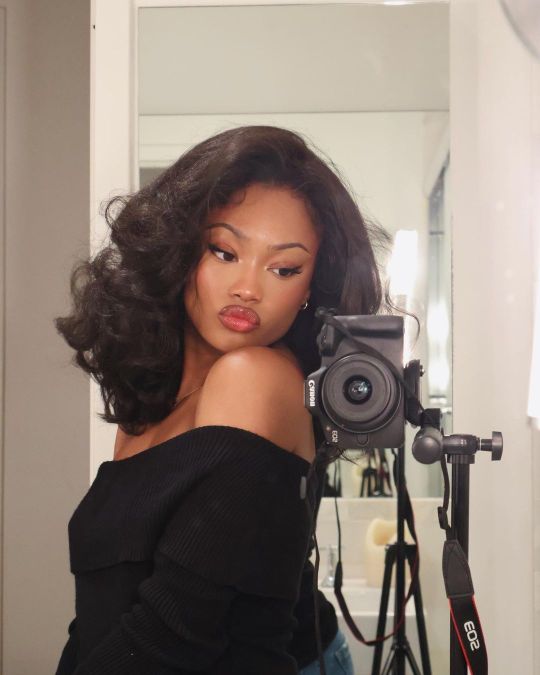
IG: @monaswain
#other#monaswain#black women#black beauty#wonderfulwoc#black femininity#melanin#pocsource#poc models#flawlesswomen#flawlessbeautyqueens#femalestunning#black woman aesthetic#black woman appreciation#blackgirlmagic#black girl aesthetic#black girl moodboard#dailywoc#black photographers#instagram#mona swain
485 notes
·
View notes
Text
European history is not white


Someone commented this to a post I reblogged, which message is basically "we shouldn't venerate the Dead White Man HistoryTM and we should elevate other history too, but we still need to learn Dead White Man HistoryTM to understand the world today". It's basically a response to the attitude you sometimes come across in the internet that sees learning about those Dead White MenTM as not worth our time. And this person, who seems to be following this blog because they responded to my reblog, takes it as a personal attack against all white Europeans. For some reason. Well I take these comments as a personal attack against historical understanding.
Firstly, the post clearly didn't say you shouldn't venerate any European history, because not all European history is Dead White Man HistoryTM. Obviously this person thinks European history is white, which is not true, but surely, surely, they know it's not all men? Secondly, what is "west culture"? When did it start? There is not one western culture, not one European culture. The first concept of some shared Europeanness was the Christendom in Middle Ages, but it was not exactly the same as we think of Europe today, because it did not include the pagan areas, but it included a lot of Levant and parts of Central Asia, where there were large Christian areas. And Europe was not "very white" nor was the Christendom. The more modern concept of West was cooked in tandem with race and whiteness during colonial era and Enlightenment, around 17th to 18th centuries. And Europe was certainly not very white then. The western world also includes a lot of colonized areas, so that's obviously not white history. Thirdly, implying that asking white people to apologize for European history (which no one did ask) is as ridiculous as asking black people for African history is... a choice. Black people do exist in a lot of other places than Africa, which white people should be the ones apologizing for, and really white people also have a lot to answer for about African history. Lastly, if you think the quote "anyone who thinks those dead white guys are aspirational is a white supremacist" means you as an European are demanded to apologize for your existence, maybe - as we say in Finland - that dog yelps, which the stick clanks. (I'm sorry I think I'm the funniest person in the world when I poorly translate Finnish sayings into English.)
The thing is, there is no point in European history, when Europe was white, for three reasons. 1) Whiteness was invented in 17th century and is an arbitrary concept that has changed it's meaning through time. 2) Whichever standard you use, historical or current, Europe still has never been all or overwhelmingly white, because whiteness is defined as the in-group of colonialists, and there has always been the internal Other too. In fact the racial hierarchy requires an internal Other. 3) People have always moved around a lot. The Eurasian steppe and the Mediterranean Sea have always been very important routes of migration and trade. I've been meaning to make a post proving exactly that to people like this, since as I've gathered my collection of primary images of clothing, I've also gathered quite a lot of European primary images showing non-white people, so I will use this opportunity to write that post.
So let's start from the beginning. Were the original inhabitants of Europe white? Of course not. The original humans had dark skin so obviously first Europeans had dark skin. Whenever new DNA evidence of dark skinned early Europeans come out (like this study), the inevitable right-wing backlash that follows is so interesting to me. Like what did you think? Do you still believe the racist 17th century theories that white people and people of colour are literally different species? I'm sure these people will implode when they learn that studies (e.g. this) suggest in fact only 10 000 years ago Europeans had dark skin, and even just 5 000 years ago, when Egypt (an many others) was already doing it's civilization thing, Europeans had brown skin (another source). According to the widely accepted theory, around that time 5 000 years ago the Proto-Indo-European language developed in the Pontic-Caspian steppe, which extends from Eastern Europe to Central Asia. These Proto-Indo-Europeans first migrated to Anatolia and then to Europe and Asia. Were they white? Well, they were probably not light skinned (probably had brown skin like the other people living in Europe around that time), the Asian branch of Indo-European peoples (Persians, most Afghans, Bengalis, most Indians, etc.) are certainly not considered white today and a lot of the people today living in that area are Turkic and Mongolic people, who are also not considered white. I think this highlights how nonsensical the concept of race is, but I don't think Proto-Indo-Europeans would have been considered white with any standard.
Around Bronze Age light skin became common among the people in Europe, while in East Asia it had become wide spread earlier. This does not however mark the point when "Europe became white". During the Bronze Age there was a lot of migration back and forth in the Eurasian steppe, and the early civilizations around Mediterranean did a lot of trade between Europe, Africa and Asia, which always means also people settling in different places to establish trading posts and intermarrying. There were several imperial powers that also stretched to multiple continents, like the briefly lived Macedonian Empire that stretched from Greece to Himalayas and Phoenicians from Levant, who didn't built an empire but settled in North Africa, Sicily and Iberia. In Iron Age the Carthaginian Empire, descendants of Phoenician settlers in current Tunisia, build an Empire that spanned most of the western Mediterranean coast. Their army occupying that area included among others Italic people, Gauls, Britons, Greeks and Amazigh people.
Iron Age also of course saw the rise of the Roman Republic, and later empire, but it was preceded by Etruscans, who populated Tuscan, and possibly preceded the Indo-European presence. However, weather through trade and migration with other Mediterraneans or the continuing presence of darker skin tones of the early Europeans, their art quite often depicts darker skin tones too, like seen below in first two images. Roman Empire at it's height spanned from Babylonia to the British Isles. They recruited soldiers from all provinces and intentionally used stationed them in different areas so they wouldn't be too sympathetic to possible rebels or neighboring enemies. Historical sources mention black Nubian soldiers in British Isles for example. They also built a lot of infrastructure around the empire to ensure protection and easy transportation through trade routes inside the empire. During this time Jewish groups also migrated from Levant to both North-Africa and Europe. Rome even had non-European emperors, like Septimius Severus who originated from Levant and was Punic (descendants of Phoenicians) from his father's side, and who was depicted with darker skin (third picture below). Various ethnicities with differing skin tones are represented all over Roman art, like in the fourth picture below from hunting lodge in Sicily.

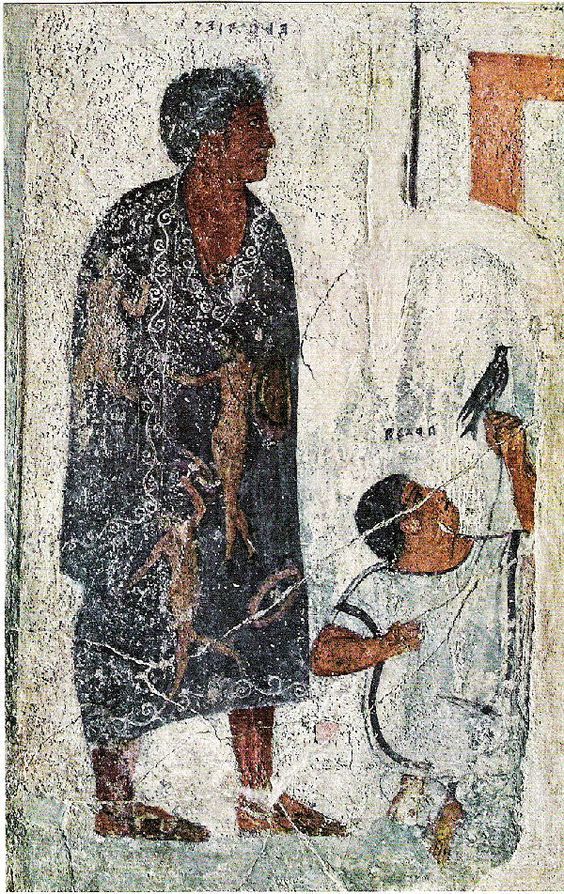


Eurasian steppe continued to be important source of migration and trade between Europe and Asia. Scythians, Iranic nomadic people, were important for facilitating the trade between East Asia and Europe through the silk road during the Iron Age. They controlled large parts of Eastern Europe ruling over Slavic people and later assimilating to the various Slavic groups after loosing their political standing. Other Iranic steppe nomads, connected to Scythian culture also populated the Eurasian steppe during and after Scythia. During the Migration Period, which happened around and after the time of Western Rome, even more different groups migrated to Europe through the steppe. Huns arrived from east to the Volga region by mid-4th century, and they likely came from the eastern parts of the steppe from Mongolian area. Their origins are unclear and they were either Mongolic, Turkic or Iranic origin, possibly some mix of them. Primary descriptions of them suggests facial features common in East Asia. They were possibly the nomadic steppe people known as Xiongnu in China, which was significant in East and Central Asia from 3rd century BCE to 2nd century CE until they moved towards west. Between 4th and 6th centuries they dominated Eastern and Central Europe and raided Roman Empire contributing to the fall of Western Rome.
After disintegration of the Hun Empire, the Huns assimilated likely to the Turkic arrivals of the second wave of the Migration Period. Turkic people originate likely in southern Siberia and in later Migration period they controlled much of the Eurasian steppe and migrated to Eastern Europe too. A Turkic Avar Khagenate (nation led by a khan) controlled much of Eastern Europe from 6th to 8th century until they were assimilated to the conquering Franks and Bulgars (another Turkic people). The Bulgars established the Bulgarian Empire, which lasted from 7th to 11th in the Balkans. The Bulgars eventually adopted the language and culture of the local Southern Slavic people. The second wave of Migration Period also saw the Moor conquest of Iberia and Sicily. Moors were not a single ethnic group but Arab and various Amazigh Muslims. Their presence in the Iberian peninsula lasted from 8th to 15th century and they controlled Sicily from 9th to 11th century until the Norman conquest. During the Norman rule though, the various religious and ethnic groups (which also included Greeks and Italic people) continued to live in relative harmony and the North-African Muslim presence continued till 13th century. Let's be clear that the Northern Europe was also not white. Vikings also got their hands into the second wave migration action and traveled widely to east and west. Viking crews were not exclusively Scandinavians, but recruited along their travels various other people, as DNA evidence proves. They also traded with Byzantium (when they weren't raiding it) and Turkic people, intermarried and bought slaves, some of which were not white or European. A Muslim traveler even wrote one of the most important accounts of Vikings when encountering them in Volga.
By this point it should already be clear that Medieval Europe was neither white, but there's more. Romani people, who originate from India and speak Indo-Aryan language, arrived around 12th century to Balkans. They continued to migrate through Europe, by 14th century they were in Italy, by 15th century in Germany and by 16h century in Britain and Sweden. Another wave of Romani migration from Persia through North-Africa, arrived in Europe around 15th century. Then there's the Mongol Empire. In 13th century they ruled very briefly a massive portion of the whole Eurasian continent, including the Eastern Europe. After reaching it's largest extent, it quickly disintegrated. The Eurasian Steppe became the Golden Horde, but lost most of the Eastern-Europe, except Pontic-Caspian Steppe. They ruled over Slavs, Circissians, Turkic groups and Finno-Ugric groups till early 15th century. The Mongolian rulers assimilated to the Turkic people, who had been the previous rulers in most of the steppe. These Turkic people of the Golden Horde came to be known as Tatars. Golden Horde eventually split into several Tatar khagenates in 15th century, when the khagenates, except the Crimean Khagenate, were conquered by the Tsardom of Moscovy. Crimean Khagenate was annexed by the Russian Empire in 1783. Crusades were a movement from Europe to Levant, but they also meant intermarriage in the the Crusader kingdoms especially between the European and Levant Christians, and some movement back and froth between these kingdoms and Europe, trade and a lot of movement back after the Crusader kingdoms were defeated in 13th century. Generally too trade across the Mediterranean sea was extensive and led to migration and intermarriage.
And here's some example of people of colour in Medieval European art, shown as part of the majority white European societies. First is from a 15th century French manuscript depicting Burgundy court with dark skin courtier and lady in waiting. Second one is from a Flemish manuscript from 15th century of courtiers, including a black courtier, going for a hunt. Third is a 15th century Venetian gondolier with dark skin.

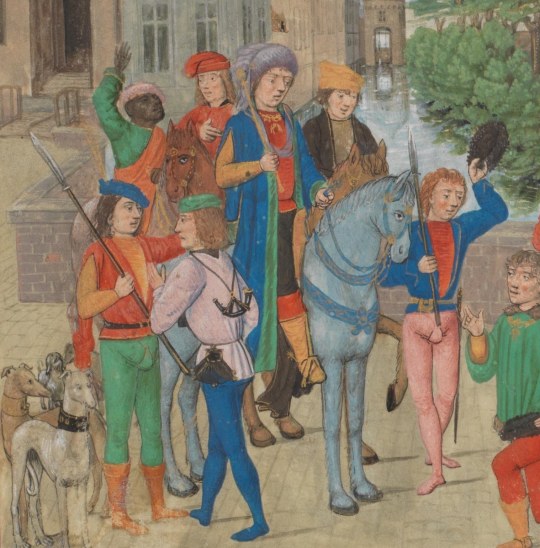

In Renaissance Era Europe was only increasing it's trade and therefore had even more connections outside Europe. The first picture below is Lisbon, which had strong trade relationship with Africa, depicted in late 16th century. People with darker skin tones were part all classes. Second image is an Italian portrait of probably a seamstress from 16th century. Third one is a portrait of one of the personal guards of the Holy Roman Emperor. Fourth image is a portrait of Alessandro de' Medici, duke of Florence, who was noted for his brown complexion, and the modern scholarly theory is that his mother was a (likely brown) Italian peasant woman.
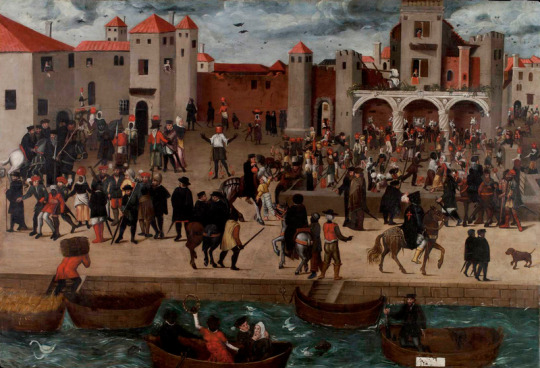

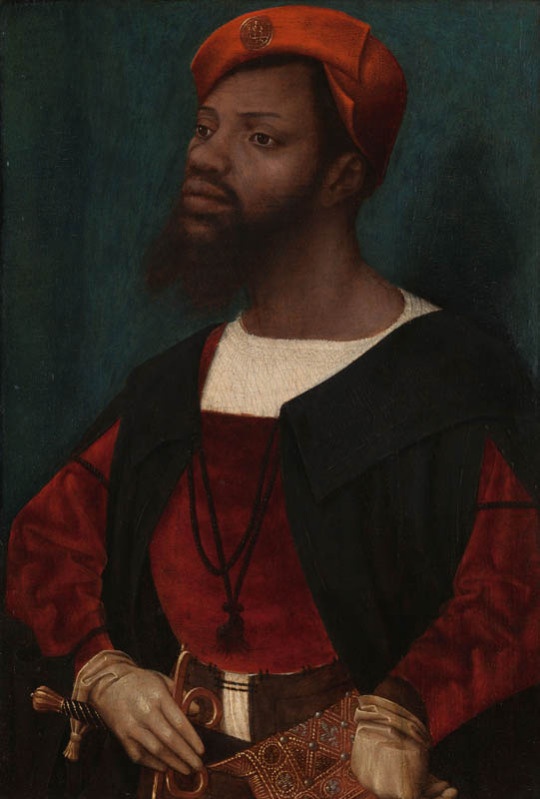

Colonialism begun in the Renaissance Era, but the wide spread colonial extraction and slavery really got going in the 17th century. Racial hierarchy was developed initially to justify the trans-Atlantic slave trade specifically. That's why the early racial essentialism was mostly focused on establishing differences between white Europeans and black Africans. Whiteness was the default, many theories believed humans were originally white and non-whites "degenerated" either through their lives (some believed dark skin was basically a tan or a desease and that everyone was born white) or through history. Originally white people included West-Asians, some Central-Asians, some North-Africans and even sometimes Indigenous Americans in addition to Europeans. The category of white inevitably shrank as more justifications for atrocities of the ever expanding colonial exploitation were required. The colonial exploitation facilitated development of capitalism and the industrial revolution, which led to extreme class inequality and worsening poverty in the European colonial powers. This eventually became an issue for the beneficiaries of colonialism as worker movements and socialism were suddenly very appealing to the working class.
So what did the ruling classes do? Shrink whiteness and give white working classes and middle classes justifications to oppress others. Jews and Roma people had long been common scapegoats and targets of oppression. Their oppression was updated to the modern era and racial categories were built for that purpose. The colonial powers had practiced in their own neighborhoods before starting their colonial projects in earnest and many of those European proto-colonies were developed to the modern colonial model and justified the same way. In 19th century, when racial pseudoscience was reaching it's peak, Slavs, others in Balkan, the Irish (more broadly Celts), Sámi (who had lost their white card very early), Finns, Southern Italians, the Spanish, the Southern French and Greeks all were considered at least not fully white. The Southern Europeans and many Slavs were not even colonized (at least in the modern sense, though with some cases like Greeks it's more complicated than that), but they looked too much and were culturally too similar to other non-white Mediterraneans, and they were generally quite poor. In many of these cases, like Italians, the French and Slavs, it was primarily others belonging in the same group, who were making them into second class citizens. All this is to highlight how very malleable the concept of race is and that it's not at all easy to define the race of historical people.
However, even if we would go with the racial categories of today, Europe was still far from being all white in this period. You had Roma, who certainly are not included in whiteness today, and European Jews, whose whiteness is very conditional, descendants of Moors in Southern Europe and Tatars and Turks in Eastern Europe and Turkey, which today is often not thought of as part of Europe, but historically certainly was. And then colonialism brought even more people into Europe forcibly, in search of work because their home was destroyed or for diplomatic and business reasons. There were then even more people of colour, but they were more segregated from the white society. Black slaves and servants are very much represented in European art from 17th century onward, but these were not the only roles non-white people in Europe were in, which I will use these examples to show. First is a Flemish portrait of Congo's Emissary, Dom Miguel de Castro, 1643. Second is a 1650 portrait of a Moorish Spanish man Juan de Pareja, who was enslaved by the artist as artisanal assistant, but was freed and became a successful artist himself. Third is a 1768 portrait of Ignatius Sancho, a British-African writer and abolitionist, who had escaped slavery as a 20-year-old. Fourth painting is from 1778 of Dido Elizabeth Belle, a British gentlewoman born to a slave mother who was recognized as a legitimate daughter by her father, and her cousin. The fifth portrait is of an unknown woman by (probably) a Swiss painter from late 18th century. Sixth is a 1760s Italian portrait of a young black man.

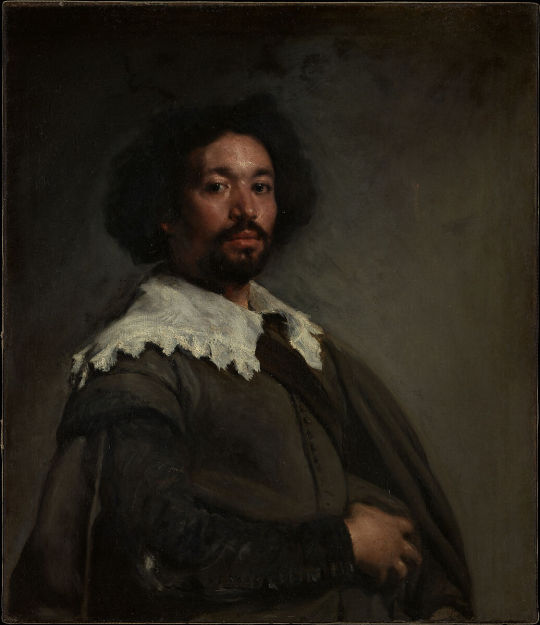
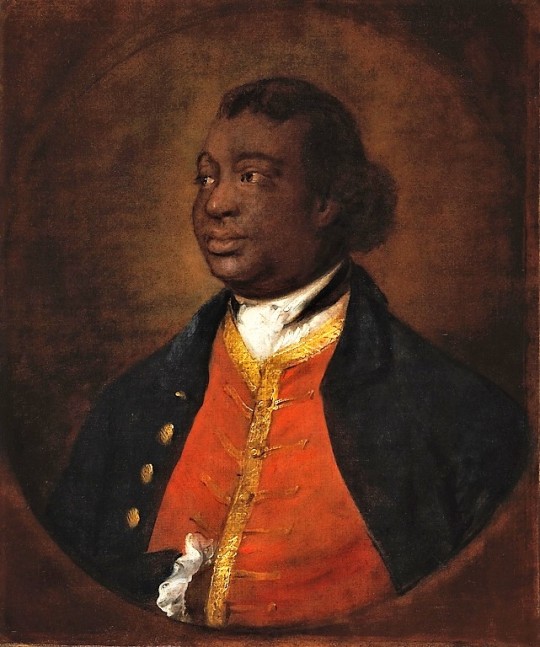
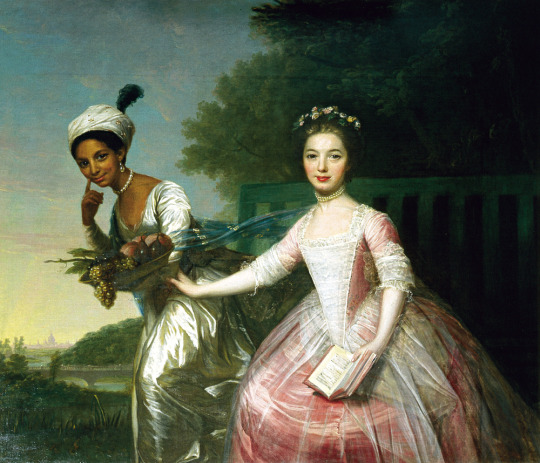
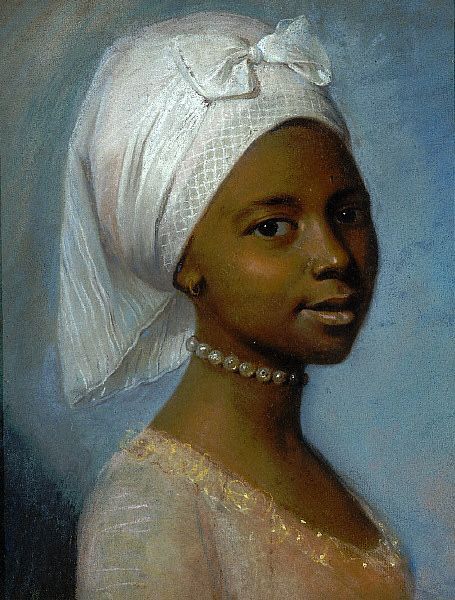
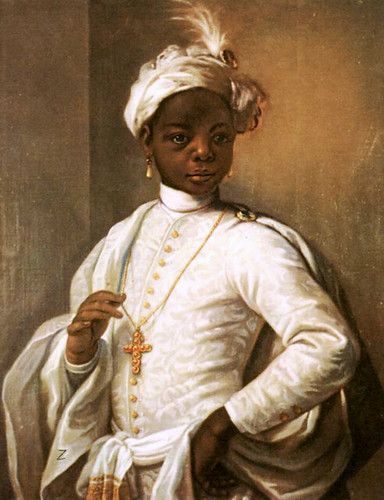
In late 18th century England abolished slavery in British Isles first, then in early 19th century in the whole British Empire, thanks to the continuous campaign of free Black people and some white allies, notably Quakers. Around the same time slavery was abolished in France (briefly till Napoleon got to power) after the French revolution. This meant there were a lot more free black people in Europe after that. In 18th century the Europeans, British especially, were colonizing Asia as much they could, which meant that in 19th century there started to also be a lot more Asian, especially Indian people in Europe. First picture below is of Thomas Alexander Dumas, who was son of a black slave woman and a white noble French man and became a general in the French revolutionary army. His son was one of the most well-known French authors, Alexander Dumas, who wrote The Count of Monte Cristo and The Three Musketeers. Second portrait is of Jean-Baptiste Belley, a Senegalese former slave, who became French revolutionary politician. Third portrait is from 1810 of Dean Mahomed, an Indian-British entrepreneur, who established the first Indian restaurant in London. Forth is Arab-Javanese Romantic painter Saleh Syarif Bustaman, who spend years in Europe. Fifth is a 1862 photo of Sara Forbes Bonnetta, originally named Aina, princess of Edbago clan of Yoruba, who was captured into slavery as a child, but later freed and made Queen Victoria's ward and goddaughter. She married a Nigerian businessman, naval officer and statesman, James Pinson Labulo Davies (sixth picture).
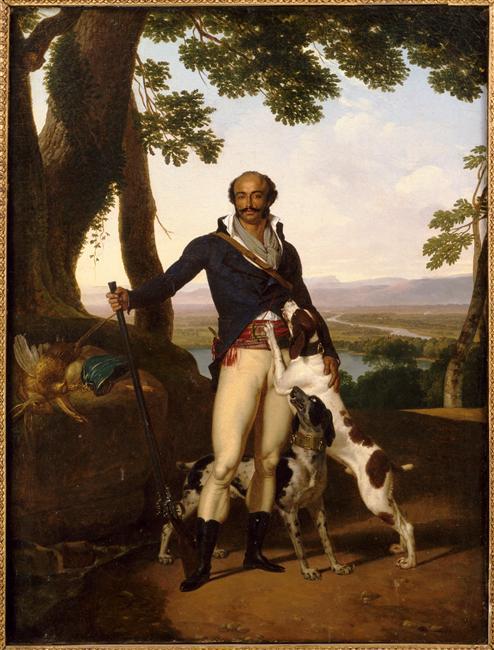


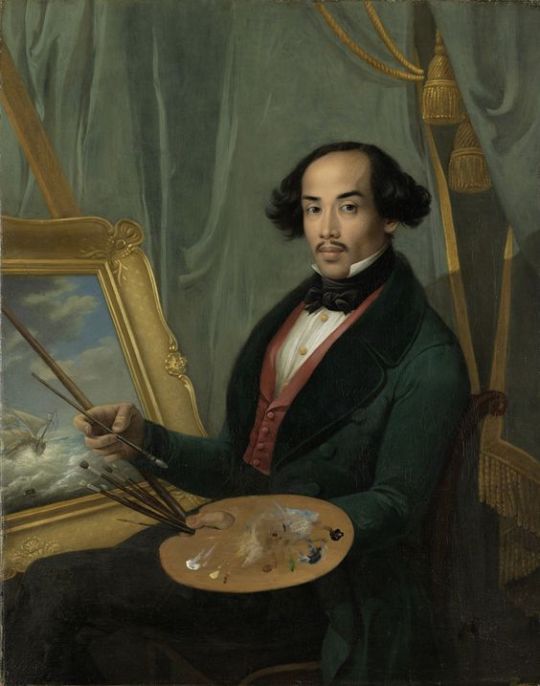
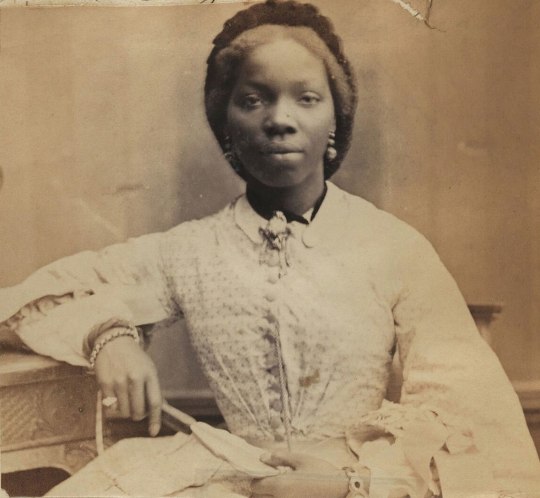
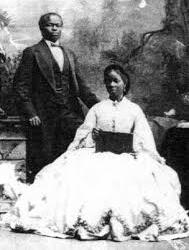
So any guesses on at what point was that "very white Europe" when the "west culture" begun? It kinda seems to me that it never actually existed.
#history#poc history#black history#historical art#european history#history of race#colonialism#racism#slavery#painting#photograph
174 notes
·
View notes
Text
𝗜'𝗺 𝗬𝗼𝘂𝗿𝘀
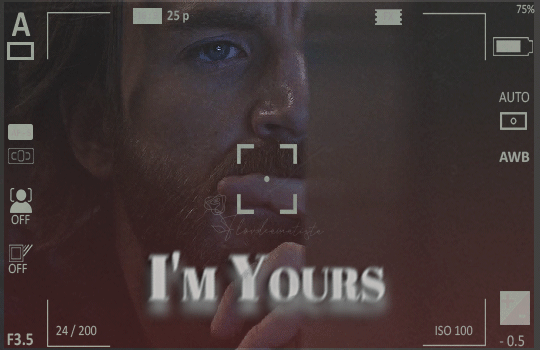
pairing: boudoir photographer!ari levinson x reader
concept: You're so pretty, I'm all yours
word count: 1.4k
warnings: new year feels, soft grey! reader, soft kisses, allusions to bj,
a/n: daydream written for the @writerscafehub writer's cafe secret santa exchange. prompt: “Character is a photographer. Reader wants to do a boudoir photo shoot for Christmas.
I appreciate the love you both gave me when I first wrote the first draft and ideas in December @targaryenvampireslayer @navybrat817
lovely beta: @/navybrat817
line divider by the lovely @s-tarksintern / the cute gif and moodboard made by me


masterlist
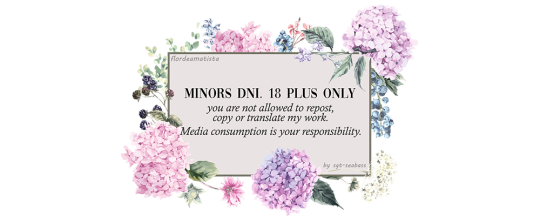
It was an image of you that sparked my desire to see you.
It was impossible not to admire your own reflection as you gazed into the large vanity mirror. Expertly applied makeup highlights your attractive features, giving you an air of magic and allure. You hadn't felt this confident and energized in a long time.
Ultimately, today was the day she returned to you.
There is a charred, hollow space in your soul where the flame of your soul once burned fiercely. The time is now to reignite that flame and let it spread throughout your veins, consuming all doubts and fears.
It's time to reclaim yourself, step back into your true self, open your heart and let her back in. After years of waiting and walking through the dark, she is coming through the day and the time for hesitation is over.
Set that flash ablaze and watch it turn into an inferno of passion and strength.
The silk robe draped smoothly over your body, providing comfort and a soft barrier as you prepared for the photo shoot. Often, a photo can convey a thousand words about a person, and your photos conveyed intensity and fierceness.
Little did you know, the man behind the camera would become the perfect match for your fiery energy. You had seen his work online, attracted by his talent and unique style. A face-to-face meeting with him, however, was a whole new experience. Your spine was tingling from his presence. The piercing blue of his eyes and the chiseled features only added to his allure. Billboards were the right place to advertise his face, not behind a camera.
Faced with his blazing inferno, you couldn't help but feel like a mere flicker.
As the light from the camera engulfs your eyes, primal desires ignite in your mind.
The heat radiating from it beckons you closer, enticing you to grasp its alluring power and reach out and grasp it.
As you step toward the camera, your heart pounding with anticipation, you repeat like a manifesting prayer, "She will burn, she will be loved."
This new year brings you closer to achieving your deepest desires.
You breathe deeply as you step in front of the lens and release any inhibitions or doubts you may have. Hearing the air rush into and out of your body, you become aware of your own existence.
Now is your chance to shine without apologies or hesitation.
Embrace your true self and ignite it before Ari Levinson's eyes.
Feel the flames of passion and authenticity dancing within you, pleading to be released.

Making your own ambiance of beauty.
A sense of anticipation tingles your body as you lie on the crisp, white sheets. There's something unmistakably sexy and inviting about the way your legs are spread apart.
Your bare skin shivers as cool air blows over it, both excited and nervous.
Standing before you is someone who has witnessed your most intimate and sensual moments.
Through the eyes of his high-quality camera, he captures each curve and angle of you, gently guiding you so that you feel more at ease and desired.
Praise and compliments from him ignite desire within you.
He is telling you to move slightly to the left, so he can see your pretty eyes. With each shot he took, his flattery stoked the sparks of desire within.
You're so pretty, I'm all yours.
Ari emerged from behind the camera and slowly approached you, getting down on his knees in front of you. You held your position, trying to maintain composure as his fingers danced across your skin.
The tension in the room only grows as his intense gaze and heavy breathing intensify.
Inhale and exhale, you remind yourself as Ari's touch becomes more daring and electrifying. In the midst of all this intensity, he gently turns your face towards another light source.
More of this touch. It will make you want to burn with him and feel his touch. This time, more.
Your mouth dropped open as he reverted to his vision.
An intense spark lit his cyan eyes, and he quickly grabbed his camera, eager to capture the raw emotion emanating from within you. Standing before him, you radiated fiery passion. With each click of the shutter, he immortalized your essence, capturing every detail, every surge of energy. The final click, the room reverberated with unbridled passion and boundless creativity as one, sealing the moment in time.

Your adoration grows in me, and I’m thrilled to be able to share mine with yours.
When you look in the mirror, your lips, covered in a rich crimson lipstick, press together. You give the mirror an air kiss. A kiss to seal this moment. A moment that you achieved.
She is getting what she was made to get on this very night.
Behind you as the sun sets, your lover now lies a peaceful state, his hands bound by metallic handcuffs under the low light. You move fluidly and seductively towards him with a mischievous twinkle in your eye. Your lips leave a trail of bold red kisses along his bare chest, each one expressing your passion and desire for him.
You are enthralled by his skin under your touch, igniting an inner fire that cannot be quenched.
Yours.
It is a man who sees your vision and your vision sees him as your own.
An abrupt blinding light breaks through the darkness as he stirs from his slumber. Trying to adjust his blurry vision, he hears soft moans escape his lips. A sudden sense of urgency arises in him as he notices your piercing eyes and your body hovering over him. Seeing your fingers clatter against his belt, he weakly grunts and asks what you were doing.
“Shhh. I'm just pleasuring my man," you declared boldly. "It's only moments ago that you were taking my pictures and now I'm fully taking you."
You felt your breath tighten as you looked at him. Seeing his body under your touch was a release because this connection is real.
Curling your lips into a sensual smile, you knew his body was yours to possess.
After having been his muse during the photoshoot, now it was your turn to capture every inch of him.
The love you shared simmered between stolen glances and yearning gazes. You glide down his zipper as his eyes widen, unable to resist your intense pull towards him.
In your arms, he belongs.
Since that first snap with his camera captured your heart, he's yours entirely.
Our connection, strong and deep, breaking through.
Despite trying to contain his moans, they escaped as he gazed upon your completely naked and flawless form. The sensation of your fingers around him was stronger than any flash in the world.
"You're mine," you declared, locking eyes with Ari in a passionate stare. "You belong to me, Ari Levinson. Only me. "I've been searching for you" With those words, you took him into your mouth, teasing him with your tongue and igniting a fire within him.
Despite trying to contain his moans, they escaped as he gazed at your completely naked and flawless form. The sensation of your fingers around him was stronger than any light in the world.
"I'm yours," you said, locking eyes with Ari. "I belong to you, Ari Levinson. Only me. You've been searching for me, and now we have found each other." With those words, you took him into your mouth, teasing him with your tongue and igniting a fire within him.
You are Ari Levinson's perfect picture.
This flame is back, and let it spread throughout your veins as you go into the flare of flame, ultimately winning the light, consuming everything you touch.
Embracing each other, two souls seeking comfort found they were not themselves completely, until they descended into lust, an intense desire that devoured their muses.


#boudoir photographer!ari levinson x reader#boudoir photographer!ari levinson#ari levinson#ari levinson x reader#ari levinson fanfiction#ari levinson x female reader#ari levison x reader#ari levinson x you#chris evans characters#chris evans x reader#ari levinson x y/n#ari levinson x latina!reader#ari levinson x woc!reader#ari levinson x fem!reader#ari levinson x poc!reader#ari levinson x curvy!reader#ari levinson x plus size reader#ari levinson fic#ari levinson smut#chris evans fanfiction#chris evans character x reader#ari levinson series
212 notes
·
View notes
Text

#photography#model#gay#gay love#qtpoc#portrait#poc#gay poc#queer romance#gay romance#Black love#gay men#gay couple#nonbinary artist#nonbinary photographer#artists on tumblr#gay aesthetic#gay pride#gay kiss#kissing#embrace#gay embrace#cuddling & snuggling
891 notes
·
View notes
Text
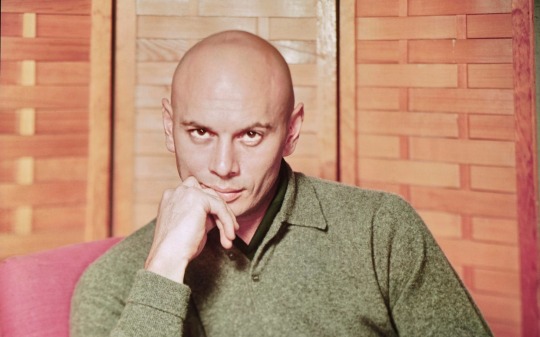
Yul Brynner (deceased)
Gender: Male
Sexuality: Bisexual
DOB: 11 July 1920
RIP: 10 October 1985
Ethnicity: Swiss-German, Russian, Buryat (Mongol), Romani
Nationality: Russian
Occupation: Actor, model, photographer, writer
#Yul Brynner#lgbt history#bisexuality#lgbt#qpoc#male#bisexual#1920#rip#historical#poc#asian#biracial#russian#mongolian#romani#actor#model#photographer#writer
68 notes
·
View notes
Text
damn, people really still have opinions like "this eldritch horror game where your paranoia manifests into real literal tentacles that kill you has an unrealistic amount of women and people of colour in it" and think that's a real proper criticism that should be taken seriously, huh?
embarrassing tbh.
meanwhile, cool and interesting people who are worth listening to are saying things like "hey you ever notice how ingfell resident never uses gendered pronouns when referring to her partner? they could be someone of any gender! that's really cool, i love that :)"
#dredge#my main point here is it's VERY silly (embarrassingly silly) to look at the game with the ghost shark and attack twisters and the serpent#and go ''ok but what REALLY took me out of it was the normal human people'' yes hi hello are you ok??? are you good???#also not that it matters but i did some counting and well#there's 22 characters who show up in dredge*#6 of them are women. 4 of them are people of colour (3 women 1 man)#like damn son u rly thought 4/22 was an unrealistic amount of poc?? really??????? girl.#*not including the fisherman or the collector or any mentioned characters who don't appear#(i made this post before the photography update but the photographer does not change the numbers much at all)
149 notes
·
View notes
Photo

Marina Gadonneix
200 notes
·
View notes
Text

FANE MASTER POST
#artists on tumblr#lgbtqia+#marginalized people#industrial#gay#experimental#comic strips#articles#mental health#fane#art#photographers on tumblr#writers on tumblr#transgressive art#transgender#poc artist#noise#punk#metal#queer#outsider#destigmatization#music#books#poetry#testimonials#live action reports#advocacy#magazine#diy
58 notes
·
View notes
Photo

Solidarity
Photograph: Mehdi Mohebipour
#flamingo#poc photographers#pattern#birds#wildlife#nature#animals#photography#cute#fauna#cute animals#wildlifephotography#peace#peace photography#Lensblr#Aesthetic#Camera#Curators on tumblr#Travel
311 notes
·
View notes
Text

2015
#flowers#ponderation#floral photography#small flowers#pink flowers#white flowers#flower photography#cottagecore#flower lovers#poc photographer#my photography#original photography#nature photography
182 notes
·
View notes
Text

Janelle Monáe by Tim Walker for Vogue UK, July 2023 edition
Styled by Kate Phelan. Set design by Miguel Bento.
#tim walker#janelle monae#janelle monáe#vogue#british vogue#vogue uk#fashion photography#editorial#fashion#british photographer#queer artist#non-binary#poc#queer poc#black musicians#black actors#african american#kate phelan#miguel bento#2023#july 2023
123 notes
·
View notes
Text

A woman swings her jitterbug partner by the legs during a Salvation Army benefit dance marathon in Los Angeles. December 12, 1939 Los Angeles, California, USA. Photo by Los Angeles Daily News
source 1, source 2
#poc#vintage poc#1939#1930s#usa#los angeles#california#vintage#vintage photos#vintage photographs#op
18 notes
·
View notes
Text
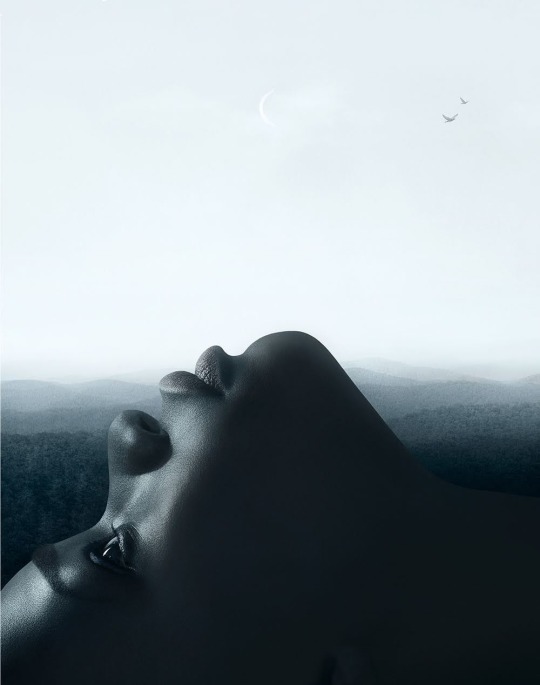



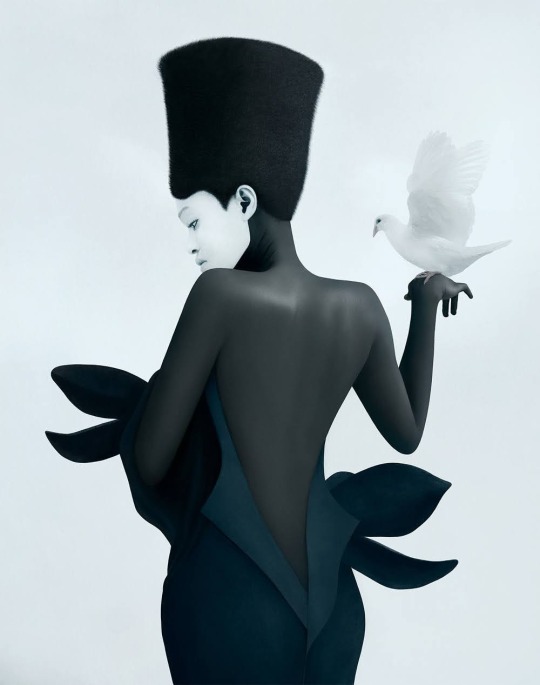
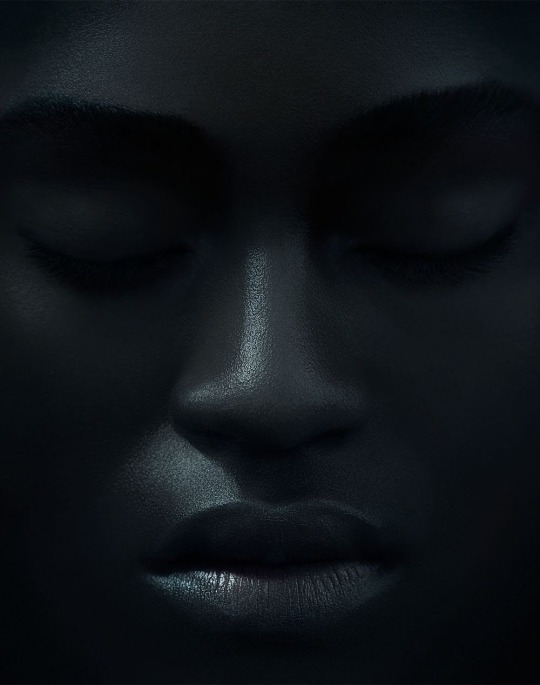
Justine Tjallinks
#dreams in blk#black tumblr#black beauty#black girl magic#black fashion model#poc aesthetic#black people#black women#blackness#black creatives#black artist#black photographers#black art#black women aesthetic#black woman#blackgirl#blackgirlbeauty#blackisbeautiful#black geeks#woc academia#poc dark academia#urban dark academia#black contemporary art#fine art photography#art ref
253 notes
·
View notes
Text
Marc Jacobs Spring 2023






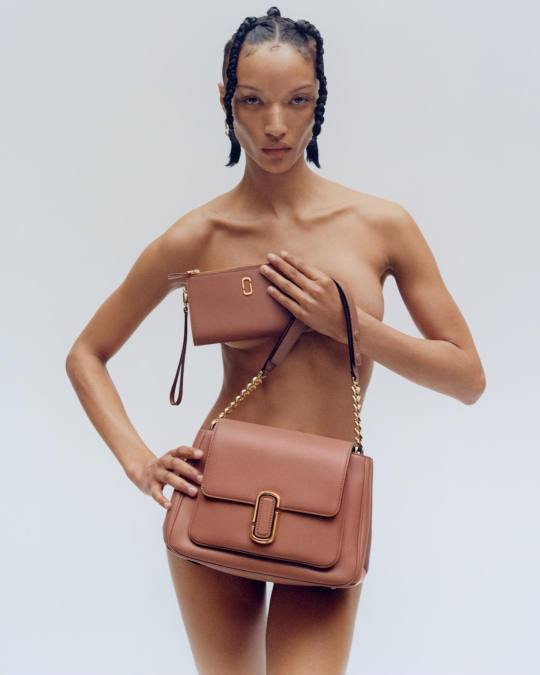

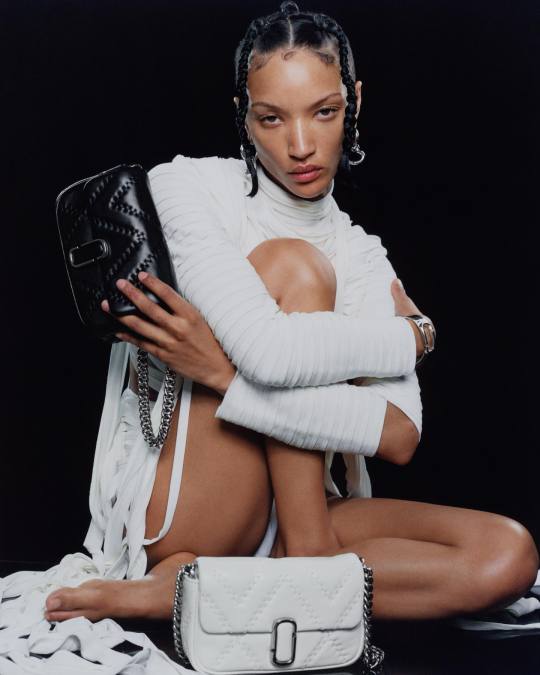
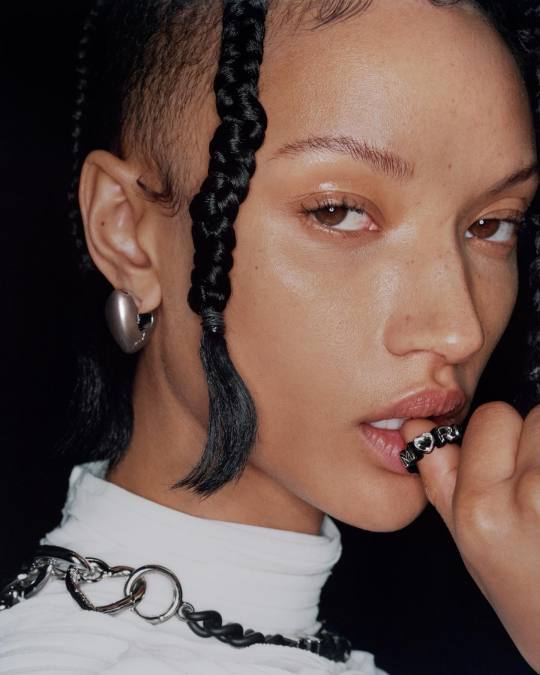
Credits
Photographer Alexandra Leese, Fashion Editor/Stylist Clare Byrne, Hair Stylist Tina Outen, Makeup Artist Emi Kaneko, Manicurist Gina Edwards, Models Jade Rabarivelo and Georgia Palmer, Designer/Brand Marc Jacobs.
#THEVILECHIVE#Alexandra Leese#Georgia Palmer#Jade Rabarivelo#Marc Jacobs#Fashion#Photographer#Brand#Handbags#Jewelry#2023#POC
8 notes
·
View notes